All about Provence Rosé Wine
The rosé wine has definitely come to stay and the wine is now an accepted serious wine where there are styles both for a refreshing aperitif and as a perfect partner for many dishes. Previously, rosé wine was only consumed during the summer season, but as more and more people have found the wine’s food-friendly properties consumption is more widespread during the year, even though the summer is of course the big season.
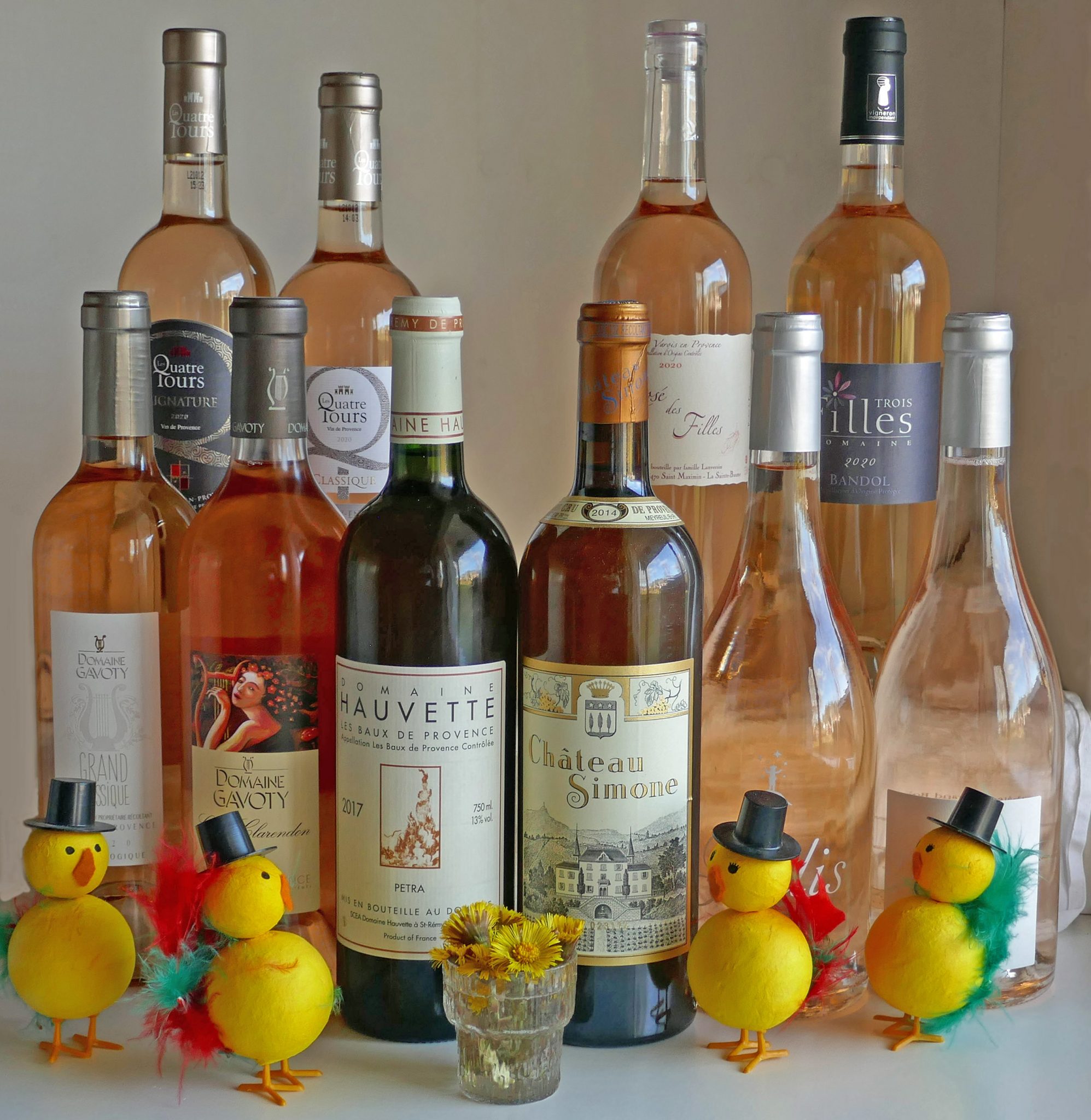
Provence Rosé Wine Style is the Model
The light-coloured, fresh Provence rosé wine of today has only been around for 20 years and the quality has increased much during that time, much thanks to the work carried out by the world’s only research centre for rosé wine “Center du Rosé Recherche et Expérimentation” in Vidauban. Despite the fact that the biggest quality improvement has now been made, the quality of this only 20-year-old wine type will increase further. Then, unfortunately, the commercial success has meant that there are too many simple rosé wines with a pale character and which are called “technological wines” by French wine critics as their aromas and flavours are too much given by the work in the wine cellar. As always, you will find the best and most interesting wines from the smaller artisanal producers.
How to Blend the Rosé Wine?
As you already know, in France it is only in Champagne that it is allowed to produce rosé wine by blending white and red wine. For other rosé wines, the colour is obtained by leaching the colour in the skin of the red grapes for a short time during the winemaking.
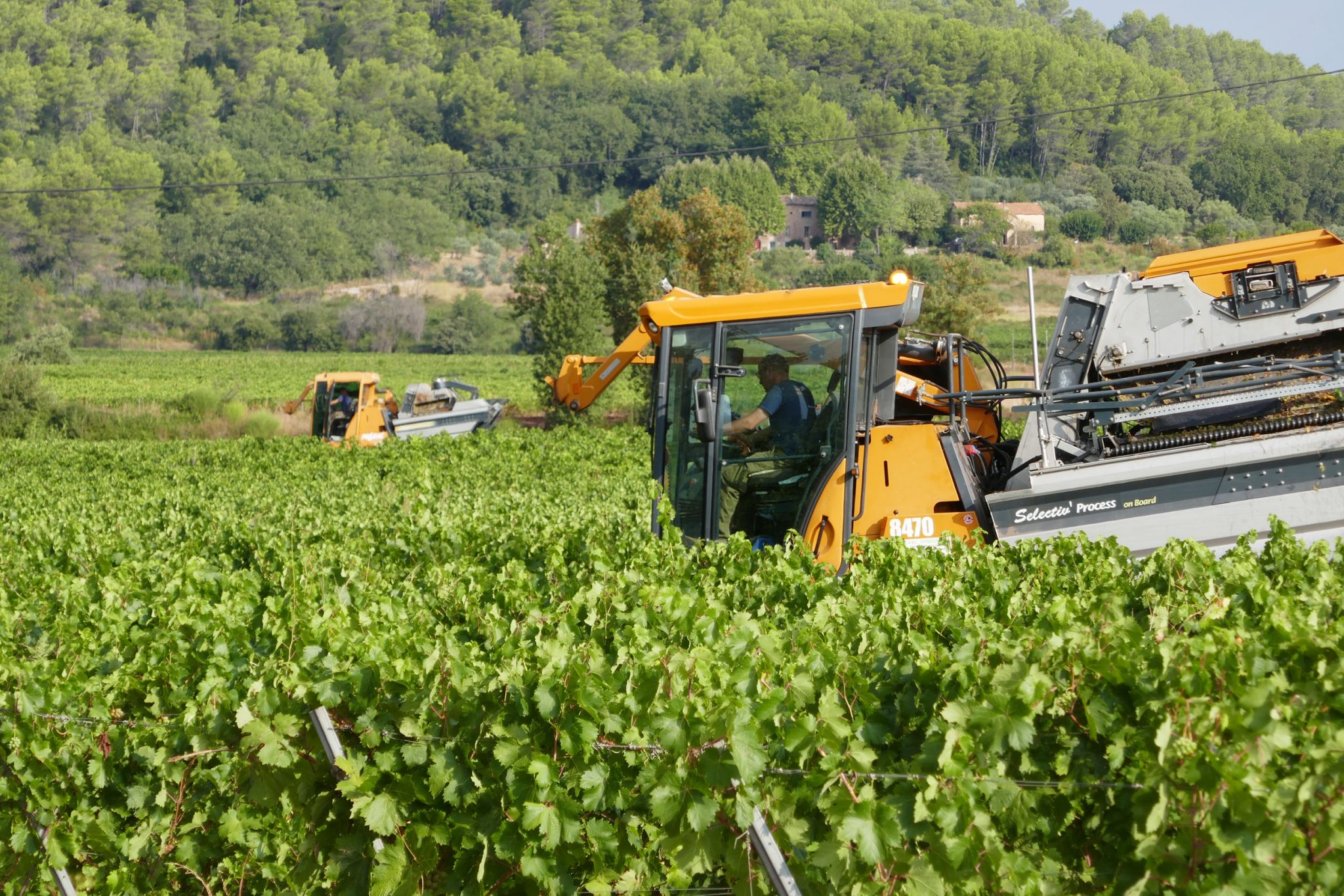
Provence light-coloured, fresh rosé is the style reference today and the proportion of rosé in Provence is as much as 88%! The secrets to produce the light and fresh rosé wines are:
- Harvest when the grapes have the right “fresh” ripening, for rosé it is not as important as for red wine that the so-called phenolic ripening (“skin ripening”) is completely finished but more important is that the acidity is at a good level.
- The harvest must take place early in the morning before the hot Provencal sun begins to burn so that the grapes are still cold, so mechanical harvesting is common.
- The grapes must be pressed immediately, again important with low temperature, often the must is protected against oxidation by means of protective gas
- By far the most common is that you both press and macerate / leach the grapes only for a short time in the wine press so that the wine gets its light colour. The longer the time, the more colour the wine gets.
- Before the fermentation, a cold sedimentation takes place so that particles do not follow to the subsequent fermentation, which also takes place at a low temperature.
- For the better wines, different grape varieties are fermented separately and blended later, the more ambitious winemakers such as Domaine Gavoty blend their best rosé right now, i.e. when most rosé wines have already been on the market for several months.
One requirement is that if white grapes are included, their blending must take place before the fermentation is complete. I asked that very question when I visited the wine cellar of a larger producer but they “did not want to understand the question”.
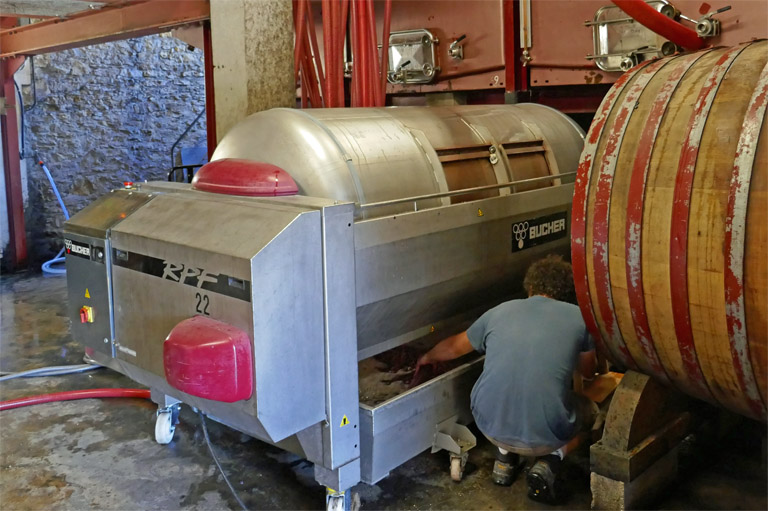
The Character of Provence rosé wine
The light colour of rosé wine has become a selling argument as many believe that the lighter the colour the better the wine, but this is not the case. As the colour has become so important, the above-mentioned rosé research institute has produced a colour chart with descriptions such as: mandarin, mango, melon, peach, pomelo and red currants.
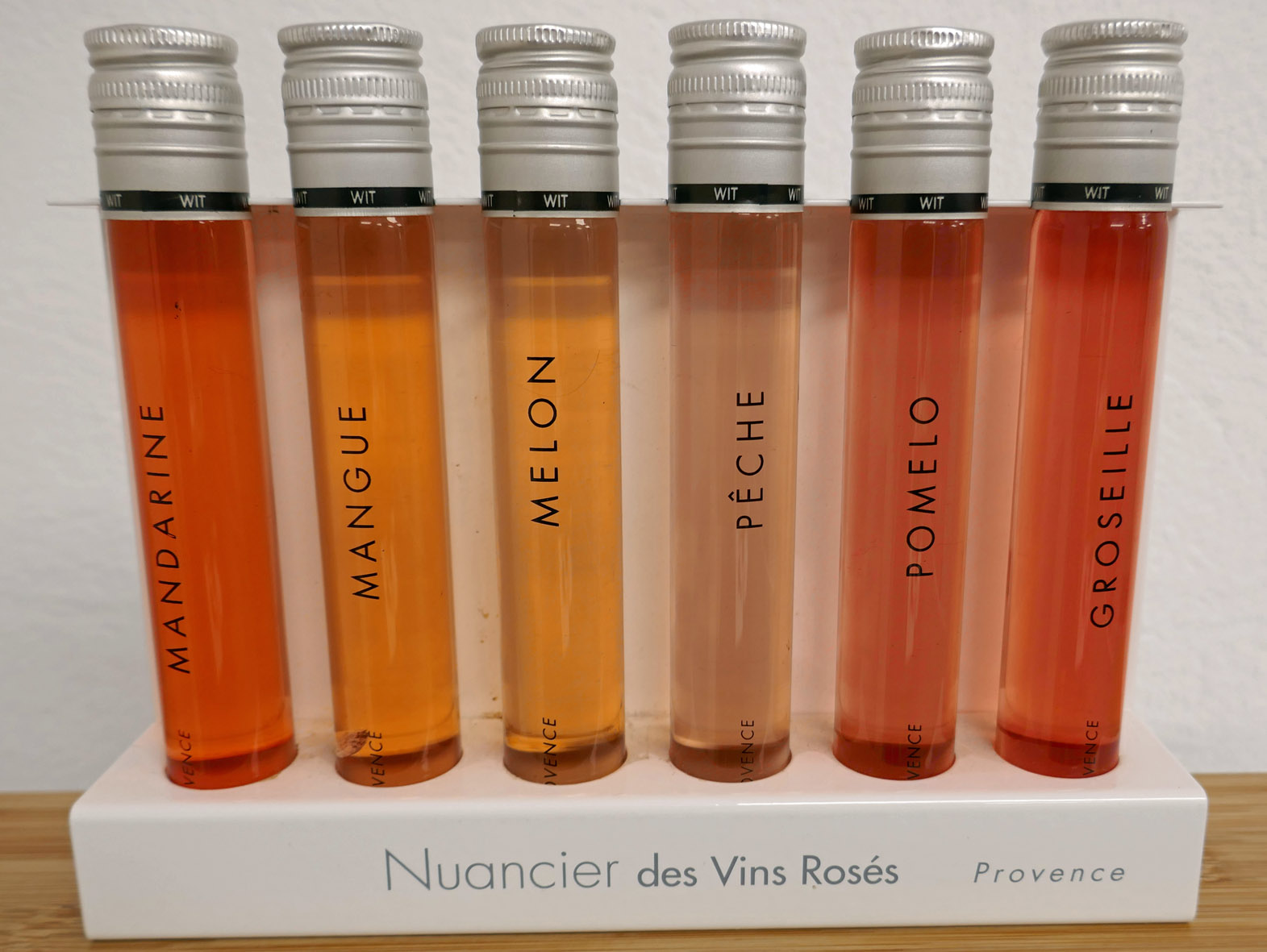
More important than the colour is of course the nose and taste! A rosé wine should have a fresh aromatic scent of fruit and sometimes flowers. Smell and taste are always individual and the scents I often find in rosé wines from Provence are a yellow fruit such as peach, citrus fruits, red fruits such as raspberries and sometimes hints of white flowers and spices.
The following aroma wheel can be used to help with the always difficult identification of scents.
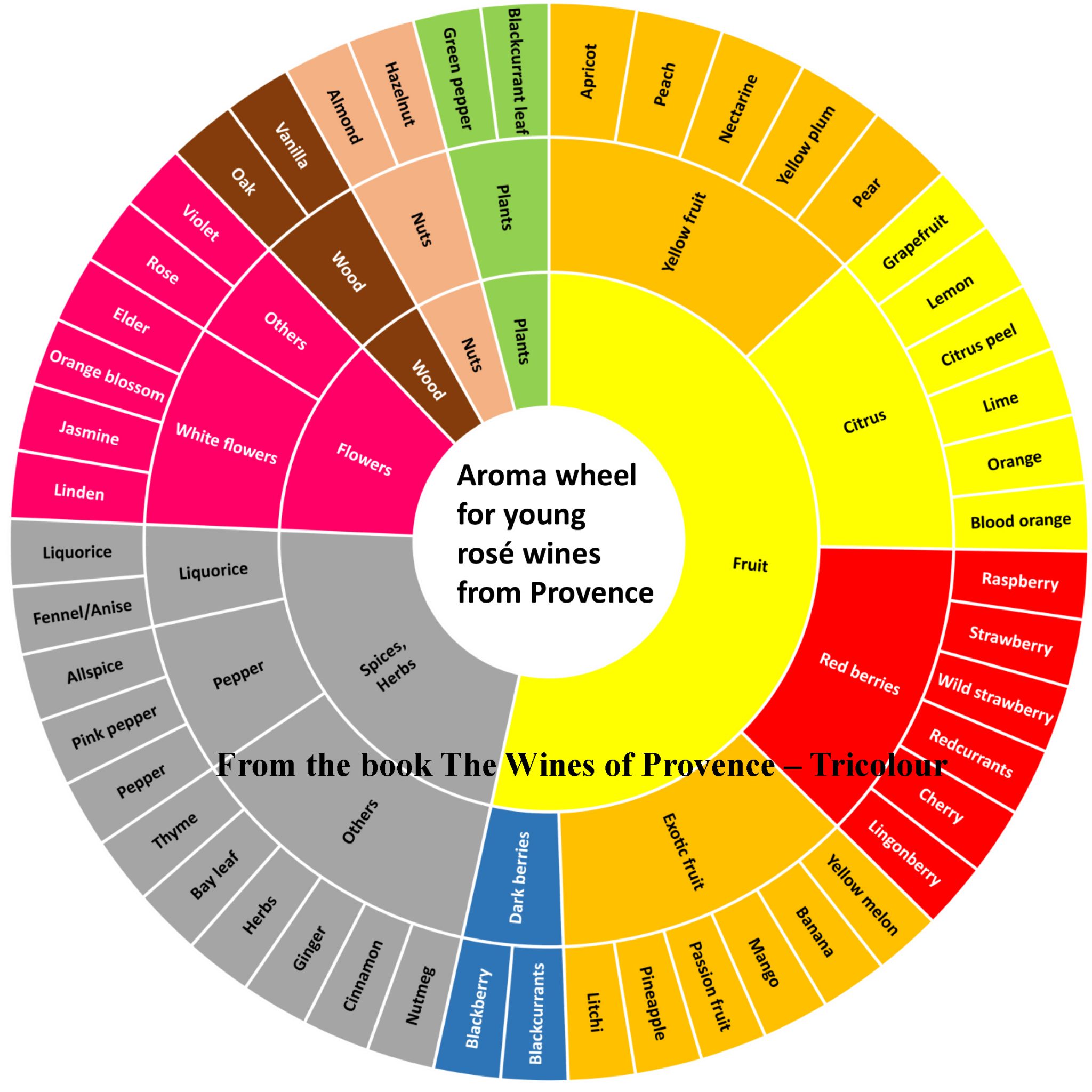
For the taste, the attack in the mouth, that is the first impression, should be refreshing and aromatic, with a palette of fruity notes. The acidity should be fresh or balanced and at the same time the wine should have both a body and a freshness; the aftertaste should be soft and with a certain body.
Lighter rosé wines are best suited as an aperitif and for lighter dishes, while wines with more body and structure are also suitable for slightly heavier dishes. Better rosé wines can also have a pleasant minerality or slight bitterness at the end, which makes them even more food-friendly.
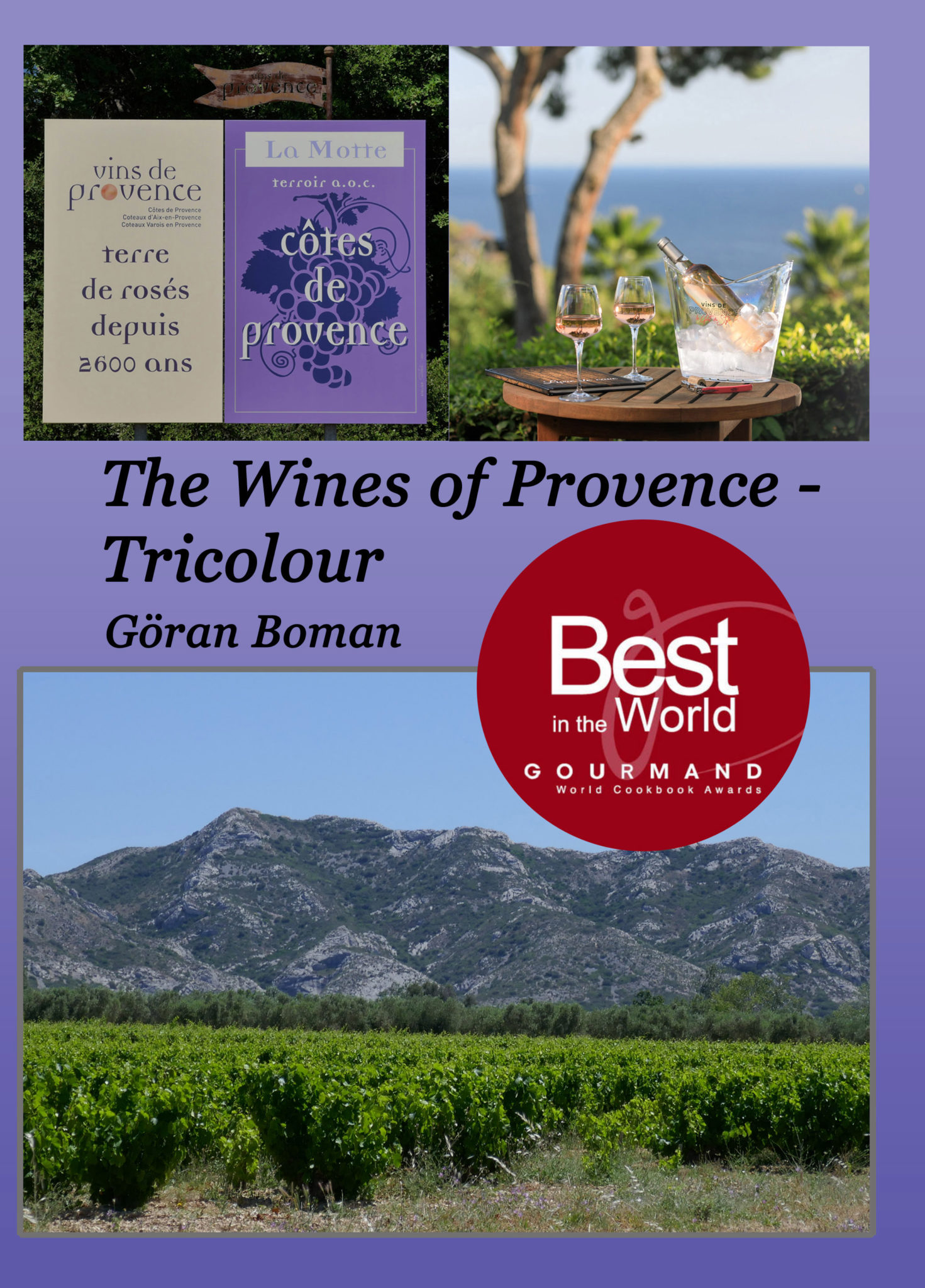
You will find much more to read about rosé wine and Provence’s wonderful white and red wines in my book “The Wines of Provence – Tricolour”.
There are also very interesting articles about rosé wine on the website Provence Wine Zin, see the articles:
- A Look at Rosé Diversity in a CIVP Masterclass with Elizabeth Gabay MW
- IS ROSÉ A SERIOUS WINE? REVISITING MY THOUGHTS ON THE SUBJECT
P.S. Remember to sign up for the newsletter so you do not miss the interesting wine news!
Also forward the Newsletter to your wine-loving friends!
